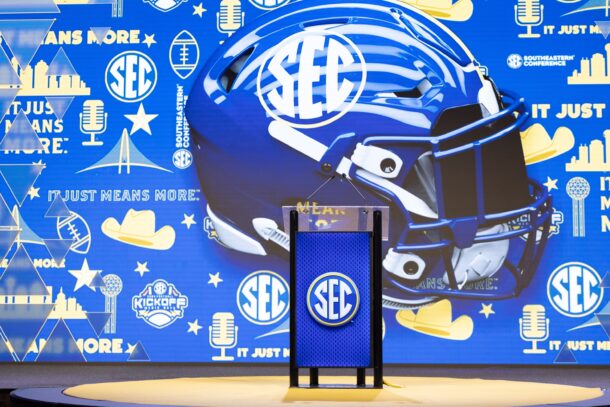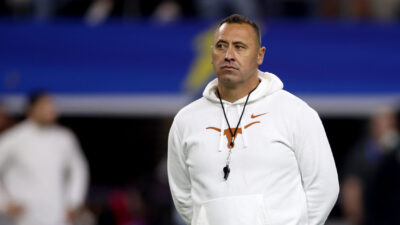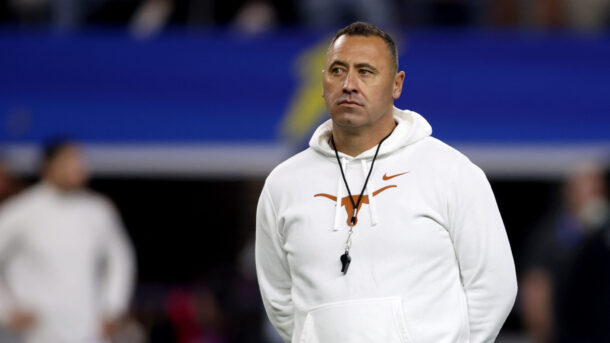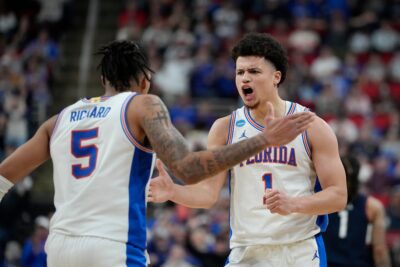Ad Disclosure
Name: National L Club Spring Football Game
Time: 2 p.m. ET
TV: SEC Network Plus
Location: Tiger Stadium (Baton Rouge, La.)
LSU is heading into a vital year. After a disappointing 2014 that featured inexperienced players all over the roster, the Tigers go into 2015 loaded with potential. In Saturday’s spring game, there is plenty LSU can look to accomplish to set the right tone for the 2015 season.
1. Put the quarterbacks in a position to succeed
Don’t get too excited by anything Brandon Harris or Anthony Jennings do on Saturday. Chances are, Les Miles and Cam Cameron are going to take all of pre-season practices to determine a starter. Miles has said the quarterback reps will be split in the spring game, meaning both will get a chance to work with the starters. While it would be beneficial for LSU if Harris can separate himself, it’s more important that Cameron incorporates new offensive wrinkles that take advantage of his quarterbacks’ skills. Last year’s playbook didn’t do that, and Cameron will have to adapt his philosophy a bit to help Jennings and Harris and their talented young receivers succeed.
2. Generate a pass rush
LSU had the top-rated defense in the SEC last season, allowing just under 317 yards per game on the year. While the main architect of that defense, John Chavis, is now plying his trade at Texas A&M, the defense is in good shape. They hired Ed Orgeron to help fix the biggest problem last year’s defense faced: rushing the passer. LSU was 13th in the SEC in sacks and was near the bottom of the conference in hurries as well. The Tigers are replacing their two starting defensive ends, but Orgeron has the tools to put together a much better pass rush in 2015, and it has to start on Saturday. The competitions for the end spots are still open, and Lewis Neal and Maquedius Bain could grab a hold of them this weekend.
3. Work on some of the new defensive fronts
A lot of the talk with new defensive coordinator Kevin Steele has been the desire for LSU to have a “multiple” defense, meaning they’ll try out a variety of defensive fronts, which goes hand-in-hand with improving the pass rush. The Tigers have been experimenting with some unfamiliar defensive alignments, moving away from Chavis’ trusty “Mustang” package to a traditional Dime defense, as well as some four-linebacker sets and introducing new roles for outside linebackers.
4. Establish the guard spots
While LSU is going through a big shakeup on the offensive line, there’s not a lot of reason to worry. Jerald Hawkins, excellent at right tackle last year, moves to replace La’el Collins at left tackle. Former left guard Vadal Alexander moves back to his natural position, taking Hawkins’ place at right tackle. After splitting time between guard and center last year, Ethan Pocic is ready to be the line’s signal caller full-time. The Tigers have a slew of options at guard: Will Clapp, Garrett Brumfield and K.J. Malone are just a few of them. Of course, whoever emerges from the spring game as starter could be uprooted once a loaded offensive line class, led by five-star guard Maea Teuhema, arrives this fall.
5. Sort out the options on the outside
Among LSU’s most talented position groups are the ones playing opposite each other on the outside, the defensive backs and the wide receivers. With D.J. Chark’s emergence, there could be shakeup within the depth chart on the offensive side. All of last year’s major contributors were freshmen, save for leading receiver Travin Dural, and those young players still have to establish themselves after all had inconsistent seasons in the Tigers’ moribund passing offense. On the other side of the line of scrimmage, LSU has one established cornerback in Tre’Davious White. At the other spot, early enrollee Kevin Toliver and rising sophomore Ed Paris are duking it out for the starting job
A former freelance journalist from Philadelphia, Brett has made the trek down to SEC country to cover the greatest conference in college football.




